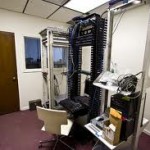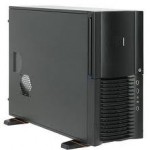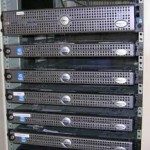As the first continuation of our multi-week series on the basics, Web & Mobile App Hosting, let's focus on how web & mobile app data is physically stored. At the most fundamental level, web & mobile app hosting depends on infrastructure such as redundant power supply, climate controlled environments, and computer software/hardware configuration. Theoretically, almost any machine works as web & mobile app host, but in practice most web & mobile app hosting is done at data centers. Data centers are tiered according to design specification, 1 to 4, where 4 is the highest grade of infrastructure.
A data center is a physical location, while a web & mobile app host is a company, meaning that many web & mobile app hosts may share the same data center (if the web & mobile hosts are relatively small companies), or an entire data center or multiple data centers may be dedicated to a single web & mobile app host (if the web & mobile app hosts are relatively large companies). Data center technologies and business practices are often secretive, for example the Server specifications or reseller arrangements (wholesale vs. retail).
To imagine a class 4 data center, picture a company like Google or Amazon, with a vast warehouse all over the world laden with electronics. Scale that picture down to a Server room in a small office, which would perhaps qualify as a tier 2 data center. Or scale down even further to a Server rack in a one-room office with a single server, as a tier 1 data center.
tier4_data_center3-150x150.jpg

tier1_data_center2-150x150.jpg

For those of you who have never seen a server, imagine a desktop computer (perhaps a bit larger), known as a tower Server, which is usually placed on a flat surface like a floor. Alternatively, a rack-mounted Server is placed in a rack that is usually elevated.
tower_server-150x150.jpg

rack_mount_server2-150x150.jpg

Some of the recent buzzwords such as the cloud, or software as a service (SaaS) exist because of the advances in data centers over the years. For example, one of Amazon's cloud offerings may be a by product of the extensive data centers Amazon needs to sustain it's core business, thus monetizing capacity that would otherwise be underutilized. To extend this example to SaaS, think Netflix streaming service--which is actually powered by Amazon, sometimes to their chagrin.
The complexities inherent to data centers and to web & mobile app hosting in general, bring us to the next installment of this multi-part series, support.
